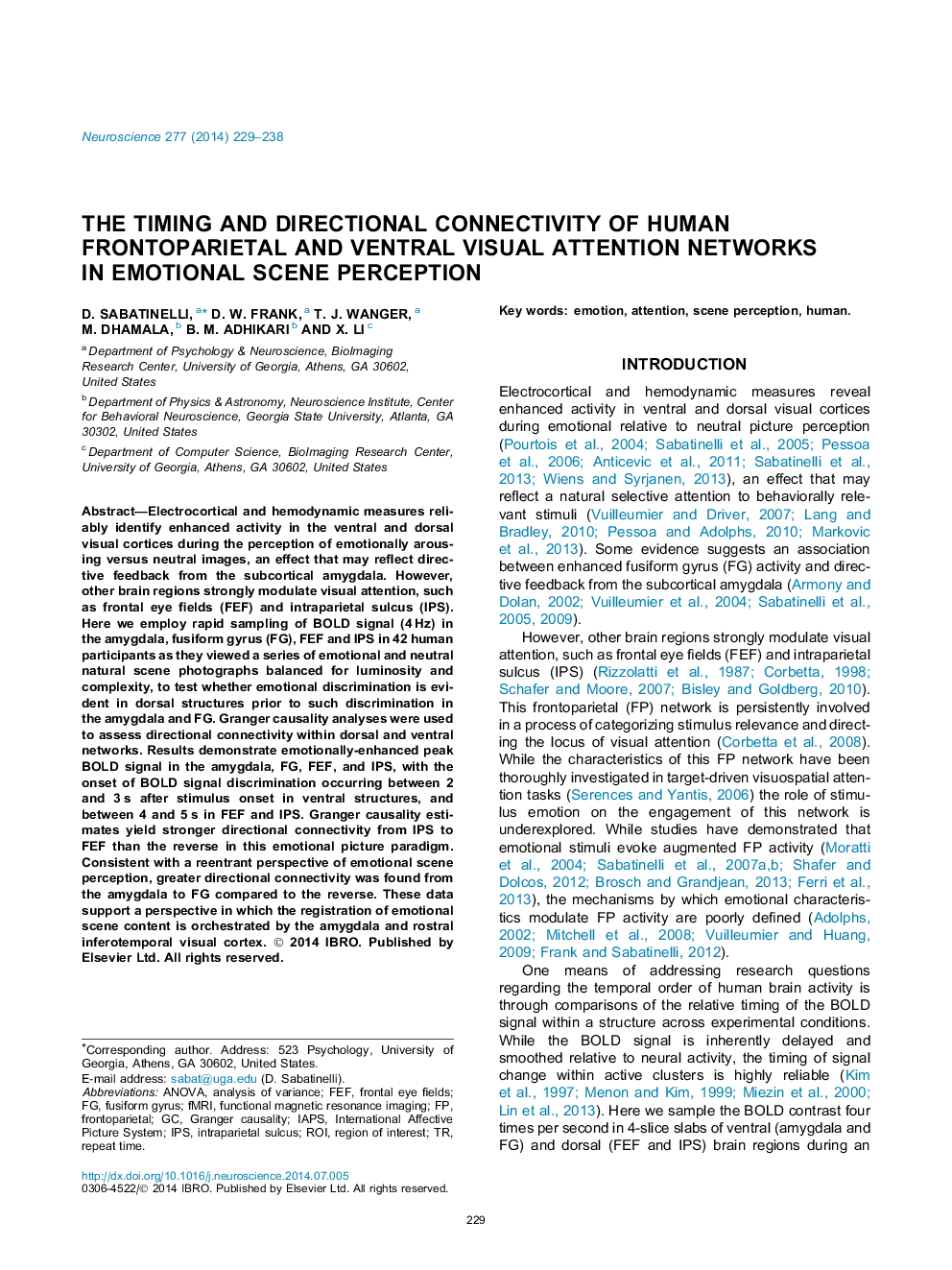| Article ID | Journal | Published Year | Pages | File Type |
|---|---|---|---|---|
| 6273593 | Neuroscience | 2014 | 10 Pages |
Abstract
Electrocortical and hemodynamic measures reliably identify enhanced activity in the ventral and dorsal visual cortices during the perception of emotionally arousing versus neutral images, an effect that may reflect directive feedback from the subcortical amygdala. However, other brain regions strongly modulate visual attention, such as frontal eye fields (FEF) and intraparietal sulcus (IPS). Here we employ rapid sampling of BOLD signal (4Â Hz) in the amygdala, fusiform gyrus (FG), FEF and IPS in 42 human participants as they viewed a series of emotional and neutral natural scene photographs balanced for luminosity and complexity, to test whether emotional discrimination is evident in dorsal structures prior to such discrimination in the amygdala and FG. Granger causality analyses were used to assess directional connectivity within dorsal and ventral networks. Results demonstrate emotionally-enhanced peak BOLD signal in the amygdala, FG, FEF, and IPS, with the onset of BOLD signal discrimination occurring between 2 and 3Â s after stimulus onset in ventral structures, and between 4 and 5Â s in FEF and IPS. Granger causality estimates yield stronger directional connectivity from IPS to FEF than the reverse in this emotional picture paradigm. Consistent with a reentrant perspective of emotional scene perception, greater directional connectivity was found from the amygdala to FG compared to the reverse. These data support a perspective in which the registration of emotional scene content is orchestrated by the amygdala and rostral inferotemporal visual cortex.
Keywords
Related Topics
Life Sciences
Neuroscience
Neuroscience (General)
Authors
D. Sabatinelli, D.W. Frank, T.J. Wanger, M. Dhamala, B.M. Adhikari, X. Li,
